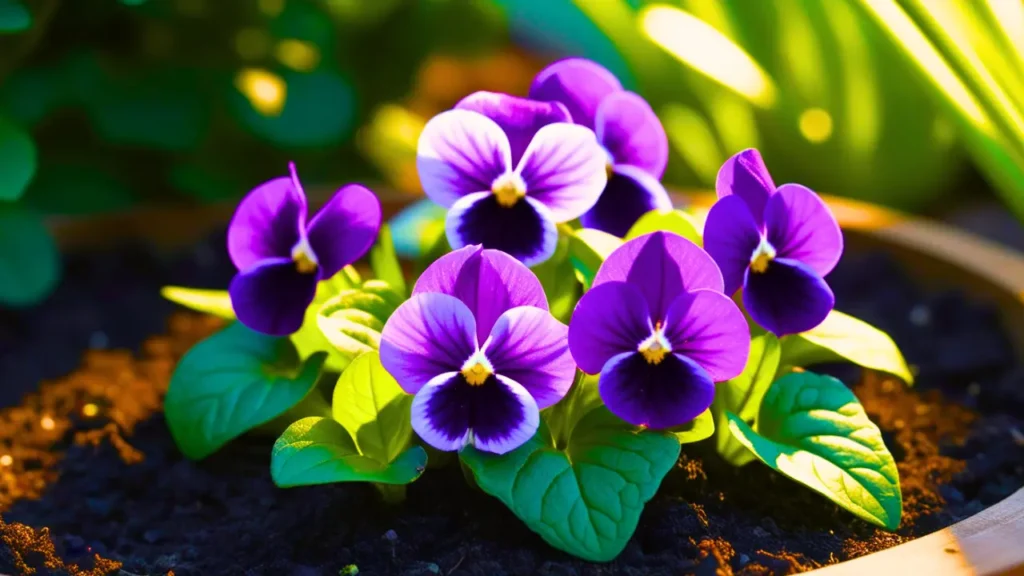Understanding the light requirements of violets is critical to their success. Violets thrive in bright, indirect light, making them perfect for indoor environments.
Direct sunlight can scorch the delicate leaves of violets, so it’s important to place them in a spot where they receive filtered light. A north- or east-facing window is ideal, as it provides the gentle morning sun without the harsh afternoon rays.
If you’re growing violets indoors and natural light is limited, consider using fluorescent lights. Position the lights about 12 inches above the plants, and provide 12 to 16 hours of light daily to mimic their natural environment.
Common Challenges and How to Overcome Them
Growing violets comes with its own set of challenges, but with the right knowledge, these can be easily managed. One common issue is powdery mildew, a fungal disease that appears as a white powder on the leaves. To prevent this, ensure good air circulation around your plants and avoid overhead watering.
Another challenge is root rot, often caused by overwatering or poor drainage. To prevent root rot, use well-draining soil and avoid letting your violets sit in water for extended periods. If you notice yellowing leaves and mushy roots, it’s time to reassess your watering routine.
Pests like aphids and spider mites can also be a problem. Regularly inspect your violets for any signs of pests, and treat them with insecticidal soap or neem oil if necessary. Keeping your plants healthy and stress-free will reduce their vulnerability to infestations.
FAQs About Growing Violets
Do violets like sun or shade?
Violets prefer bright, indirect light. Direct sunlight can damage their leaves, so it’s best to place them in a spot with filtered light, such as near a north- or east-facing window.
What is special about violets?
Violets are known for their vibrant colors and heart-shaped leaves. They’re also relatively easy to care for, making them a popular choice for indoor gardening.
What do violets symbolize?
Violets symbolize modesty, humility, and faithfulness. They’re often associated with love and remembrance, making them a meaningful addition to any home.
Are violets hard to take care of?
No, violets are not hard to take care of. With the right soil, watering, and light conditions, they can thrive with minimal effort.
Do violets come back every year?
Yes, violets are perennials, meaning they come back every year. With proper care, they will bloom annually and provide lasting beauty.
Final Thoughts

Growing violets can be a rewarding experience, especially when you see them bloom in your home. By following the guidelines provided, you’ll create an environment where your violets can thrive. Remember, the key to success is consistency in care—keep their needs in mind, and they’ll reward you with stunning flowers year after year.